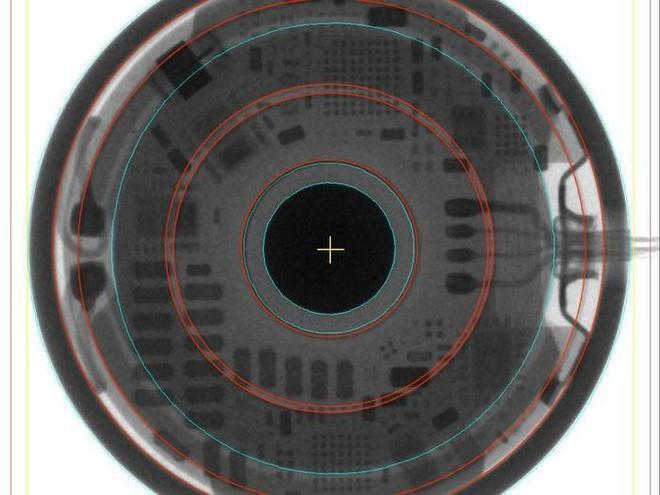Discussion on the grayscale value of industrial CT images
Release time:2023-12-12Publisher:Jeenoce
The X-ray testing used in industrial CT is one of the main non-destructive testing methods, which has advantages such as intuitiveness and accuracy compared to other methods. The size of defects perpendicular to the direction of radiographic inspection can be accurately measured, but the size of defects parallel to the direction of radiographic inspection cannot be directly measured. The measurement of defect depth such as incomplete penetration and root concavity is a common problem in practical applications.
At present, research on the grayscale value of X-ray digital images (hereinafter referred to as grayscale value) mainly focuses on analyzing the qualitative relationship between grayscale value and factors such as tube voltage and the thickness of the measured object. The grayscale value is simply described as a direct or inverse relationship with each factor, but there is no clear calculation formula or corresponding relationship between the grayscale value of the image and the thickness of the measured object.

An increase in the voltage of the X-ray tube will cause an increase in the effective energy of the radiation, which will shorten the wavelength of the radiation and cause a decrease in the attenuation coefficient. According to theories such as photoelectric effects and atomic physics, there is a conversion relationship between scattering and absorption cross-sections and attenuation coefficients. However, in practical testing, the linear attenuation coefficient changes with the thickness of the workpiece, while the distribution of strongly filtered rays in the X-ray spectrum should be in the range from the maximum intensity to the shortest wavelength. The incident energy increases with the increase of tube voltage, and the corresponding average attenuation coefficient decreases. An increase in the thickness of the tested material will also result in a decrease in the corresponding average attenuation coefficient.
X-ray digital images are displayed in the form of grayscale values, which means that the X-ray intensity needs to be converted into a digital signal (the grayscale value of the image) first. Firstly, the incident X-ray photons are converted into charges, and there is an approximate linear relationship between the number of X-ray photons irradiated on the pixel and the number of charges converted from the pixel. We can conclude that the size of the grayscale value of digital images is influenced by the material attenuation coefficient, tube voltage, tube current, exposure time, and focal length, and is also closely related to the hardware characteristics of the detection system. Through relevant experiments, we can obtain a set of data. When the tube voltage is fixed, the curve of continuously calculating the grayscale value of a set of data roughly matches the experimental value. The main reasons for this phenomenon are: 1. The grayscale value of digital images is directly related to the digital X-ray detection system, and different digital detectors have different responses. Even the same digital detector will undergo corresponding degradation over time, resulting in the grayscale value of digital images changing. The 2X ray machine is a continuous source of radiation, and during the process of correcting the hardening phenomenon of radiation through a modified model, there may be calculation errors. As the thickness of the steel plate increases, the attenuation coefficient of the material will also change, and the attenuation coefficient greatly affects the calculation of the grayscale value. From this, we can see the quantitative relationship between the grayscale value of the image and the energy, material thickness, and attenuation coefficient of the X-ray machine. There is a quantitative relationship between the thickness of different steel plate materials and the grayscale value of the image. However, due to the linear relationship between the temperature and humidity of the equipment itself or the calculation deviation, there are very subtle deviations. As the development of industrial CT equipment is becoming increasingly precise, it is believed that the errors will tend to be lower.

